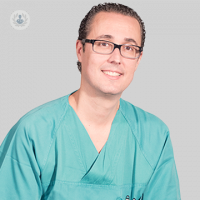How a breast augmentation is performed
Written by:An intervention of breast augmentation surgery is an increasingly safe procedure. However, it is very important to conduct a thorough study of the patient, the result you want to achieve and where to place the prosthesis.
Preoperative breast augmentation
The first step to perform a breast augmentation is conducting a thorough assessment and clinical examination by a personal interview in which the patient expresses their wishes and expectations. Only then can we advise you individually on the suitability of the intervention for case. If it is indicated, proceed to assess the patient's shape and volume of the implant l helping two new tools:
- A system of external testers
- A computer program that allows us to simulate the result in the patient with the selected implant
In this way, the patient, once understood the anatomical characteristics of your case, it is also a participant in the final choice of form and volume. Once the decision to carry out the intervention, we will make the relevant medical tests and set a date for intervention.
On examination we analyze the anatomical and tissue characteristics presented assessing the patient:
- Desires and expectations of the patient
- Measures of the breast and chest
- Amount of tissue that gives the breast of the patient, which will provide adequate coverage of the breast implant
- Degree of decline in breast
- Asymmetries, deformities and malpositions of the areolas.
These are the factors that according to specialists in Aesthetic Plastic Surgery influence the shape, dimensions and volume of the implant to be used, as well as the positioning, and surgical approach (or scar).

Stent placement and approach in a breast augmentation
In the breast of a woman we can find the following layers: skin, subcutaneous tissue, mammary gland, fascia, the pectoralis major muscle and ribs. There are three types or pocket where the prosthesis stays:
- Subglandular: between mammary gland and fascia
- Subfascial: between the fascia and the pectoralis major muscle
- Submuscular: under the pectoralis major muscle
Overall pocket recommended, to present lower rate of capsular contracture and facilitate gynecological examinations and imaging tests is the submuscular. The only drawback is that the immediate postoperative period is a bit more uncomfortable. Choosing a pocket or another depends mainly on the characteristics of each patient.
To make this pocket so you can insert the prosthesis, the incision or scar may be performed at:
- Surco midriff (lower breast crease)
- Hemiareolar bottom (bottom half of the dividing line between the areola and normal skin)
- Axillary (armpit)
Of the three incisions most recommended is the groove. It is the clean way with less bacterial load of the three and thus less likely to capsular contracture. It is also the least altered sensitivity occurs and, as is in the crease of the breast, is that in the medium and long term is less.
The lower hemiareolar the usually applied in certain cases, such as spare parts (if the scar was positioned there), the asymmetries and the ptosis or sagging breasts, whether to remove some skin around the areola. Finally, axillary, given the high bacterial load in the area, and that hinders us the correct execution of the surgery and the correct positioning of the implants that we normally use, do not recommend it.
In the operating room, once he made the pocket by the patient agreed with the approach, and prior to implantation of the prosthesis, proceed to check the volume and definitive manner, using sizers, Surgical meters. These meters are tested in the same prosthesis size and shape to the final implants and placed intraoperatively allow us to adjust the most of the final choice of the volume and shape of the prosthesis.
Notably, breast augmentation is always performed under general anesthesia and only dete rminadas like situations are small tweaks and spare parts can be assessed prótesis- local anesthesia with sedation. The operating time is about two hours but, in some cases (correction of asymmetries, deformities, such as tuberous breast, etc.) surgery can take us about an hour or two hours.
And postoperative recovery breast augmentation
The patient will be entered one night in the hospital he was discharged the next day. Discharge normally drains withdraw except when the intervention is more complex as in the case of tuberous breast or mastopexy with prosthesis. In addition they will also remain more days if we used prosthesis with Polyurethane.
Between the fourth and fifth days, we will first review past use and the sports bra without rims. The patient can already apply wet wounds that indicate you care. Between the 7th and 10th day the patient was able to incorporate into their daily activities to avoid physical exertion and work involving heavy lifting.
Other recommendations to be respected during the first month, are to wear a bra all day, not to massage the chest, and sleep up.
During the second and third month, you can now make soft sport, but must sleep with the sports bra and will not be massaged his chest until he was three months time after which you can make a normal life as if it had not been involved.
The revisions are quarterly recommend not exceeding a year, and then annually, in order to monitor and verify that everything evolves properly. Only then can we advise the patient the right attitude if you suspect or make any alteration or doubt.


